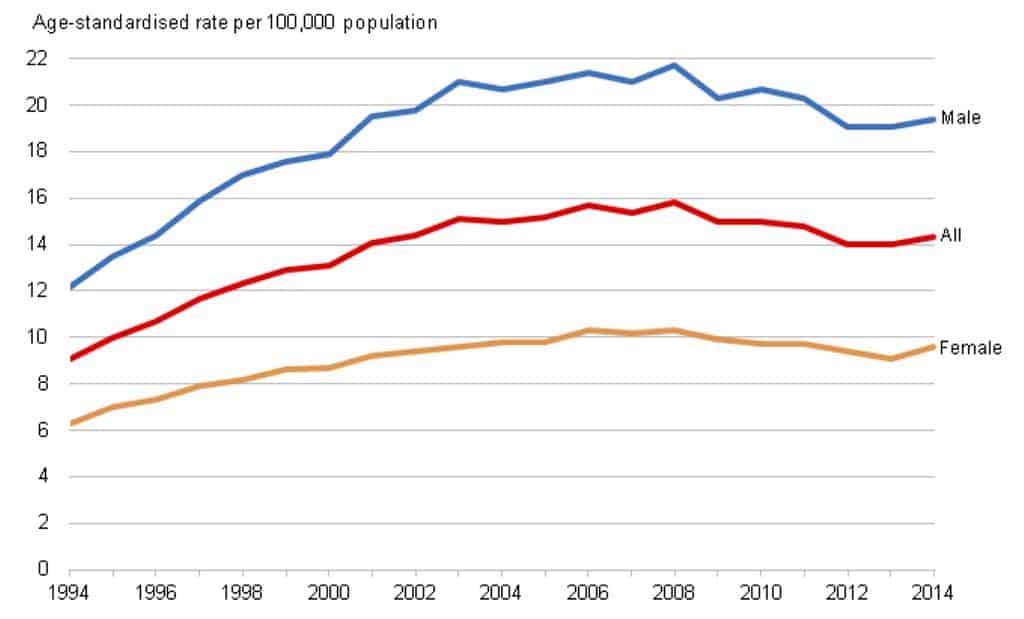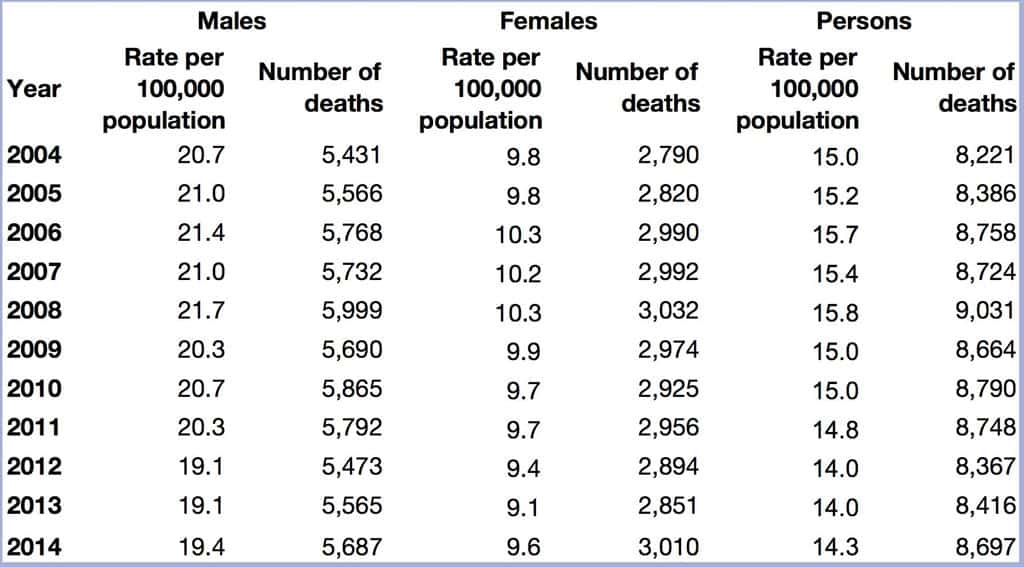The latest Office for National Statistics (ONS) report, ‘Alcohol-related deaths in the UK, registered in 2014‘, found a 3% increase in the annual number of alcohol-related deaths (8,697 deaths; 14.3 deaths per 100,000), compared with the previous year (8,416 deaths; 14 per 100,000), the largest occurring among females (6%, compared with 2% males).
The ONS summary states that in the UK as a whole, alcohol-related death rates have fallen since peaking in 2008, but the most recent year’s mortality rate is still higher than that observed twenty years ago.

Similarly, although the broad picture shows that the majority of alcohol-related deaths (65%) in the UK in 2014 were still among males, the number of female deaths in the UK was at its highest level for six years (3,010 deaths, see below). There was a 6% increase in alcohol-related deaths among females and a 2% increase among males.

The annual number and rate of deaths among females also increased in all four Home Nations on last year, whereas it has fallen slightly for men in Wales and Northern Ireland.
Regionally, the data showed little change. For both sexes, Scotland had the highest alcohol-related death rates in 2014, but Scotland has also seen the fastest decrease in its rates since they peaked in the 2000s. Alcohol-related death rates for both sexes were significantly higher in the north of England than the south in 2014.
Alcohol deaths most common among middle-aged
In 2014, age-specific rates for men were highest among those aged 60 to 64 years (47.6 deaths per 100,000 men) and lowest among 25 to 29-year-olds (1.8 per 100,000). For women, rates were highest among 55 to 59-year-olds (22.1 per 100,000) and lowest among 25 to 29-year-olds (1.1 per 100,000).
The health effects of alcohol consumed during a drinker’s life appear most likely to have the greatest influence on those in middle age. Commenting on the results from their time series, the ONS report observes: “In each year between 1994 and 2014, the age-specific rate for alcohol-related deaths increased steadily with age, before generally peaking among those in their 50s or 60s. The rate then fell in subsequent age groups and, in some cases, the oldest age groups from 75 years upwards had rates similar to those in their 40s.”
Public Health England (PHE) – who will release their Local Alcohol Profiles England report update in March – saw the figures as yet further evidence that more needs to be done around reducing the harms from alcohol. Professor Kevin Fenton, Director of Health and Wellbeing at PHE said:
“With over 10 million people in England drinking too much it is no surprise that deaths from alcohol continue to be far higher than ten years ago.
“Alcohol harms individuals, families and communities and it’s crucial that, alongside effective local interventions and treatment for those that need it, we look more widely at what affects drinking behaviour in this country, such as marketing and pricing.”
